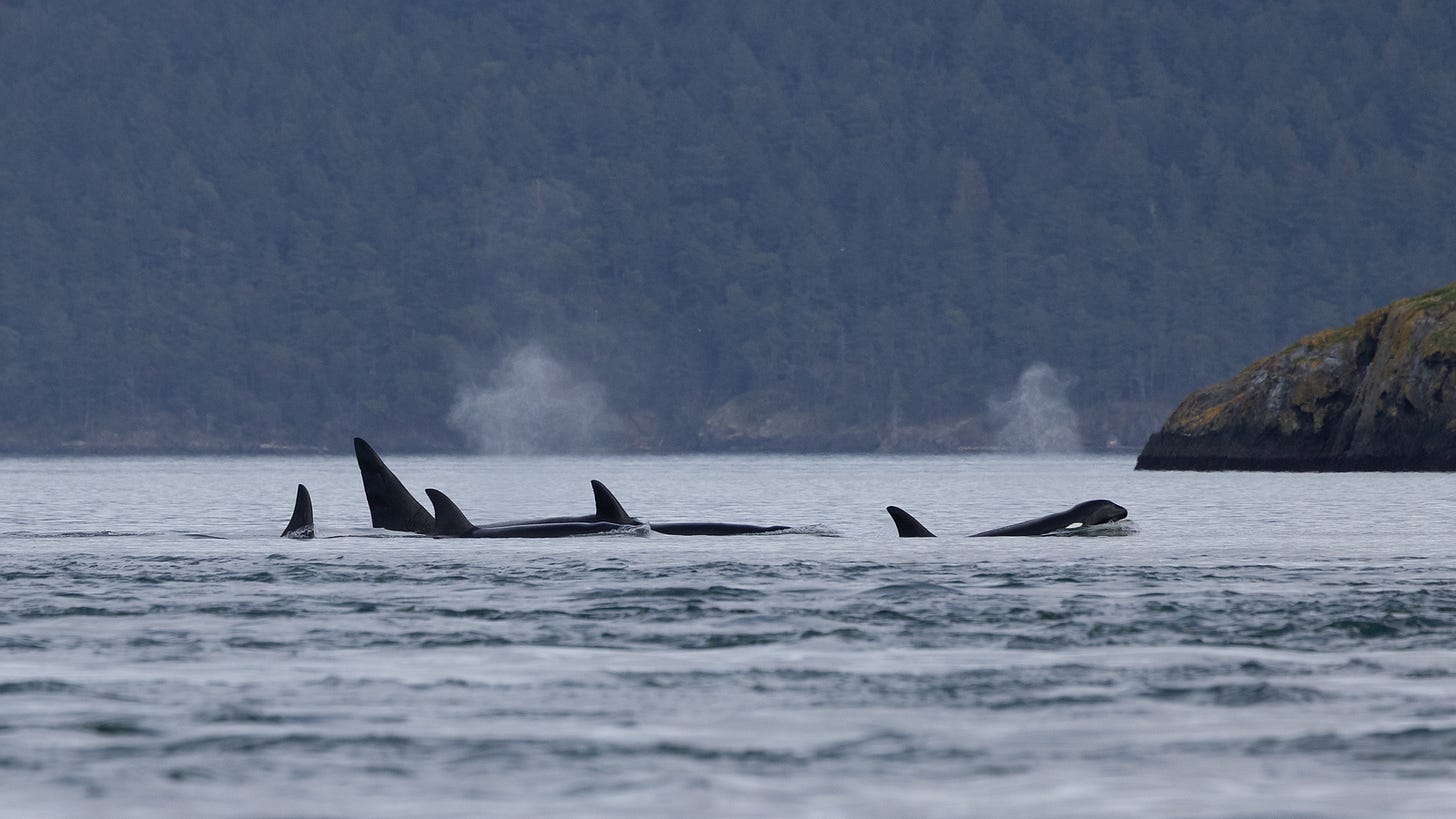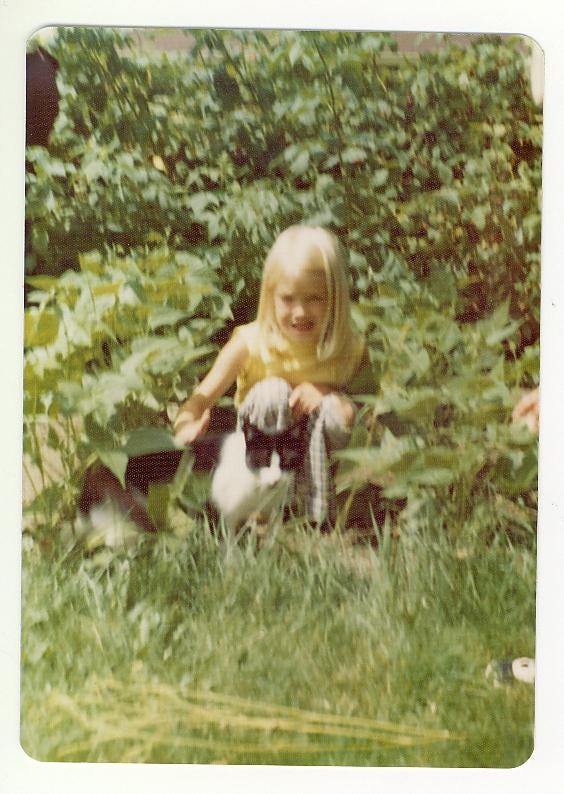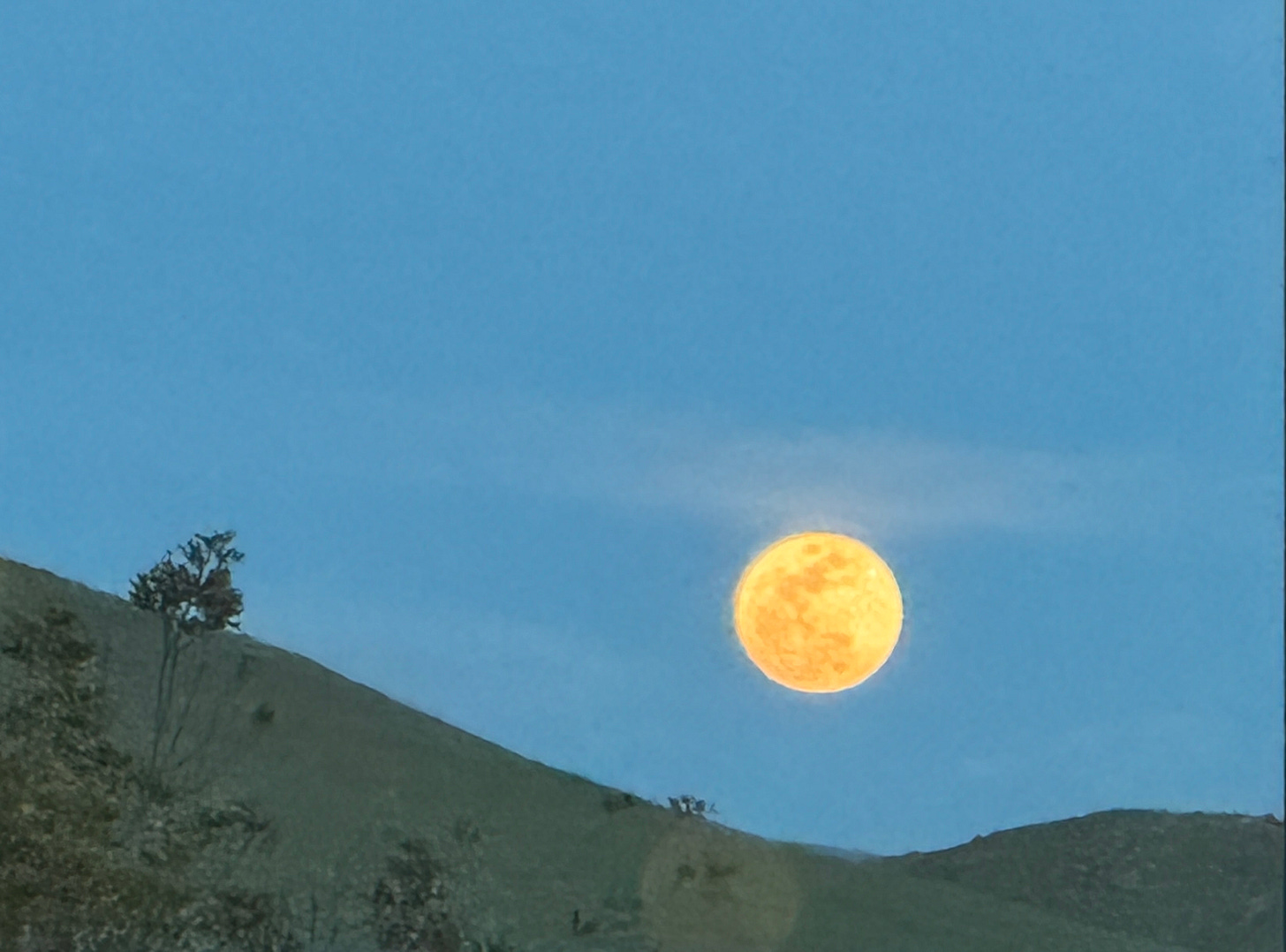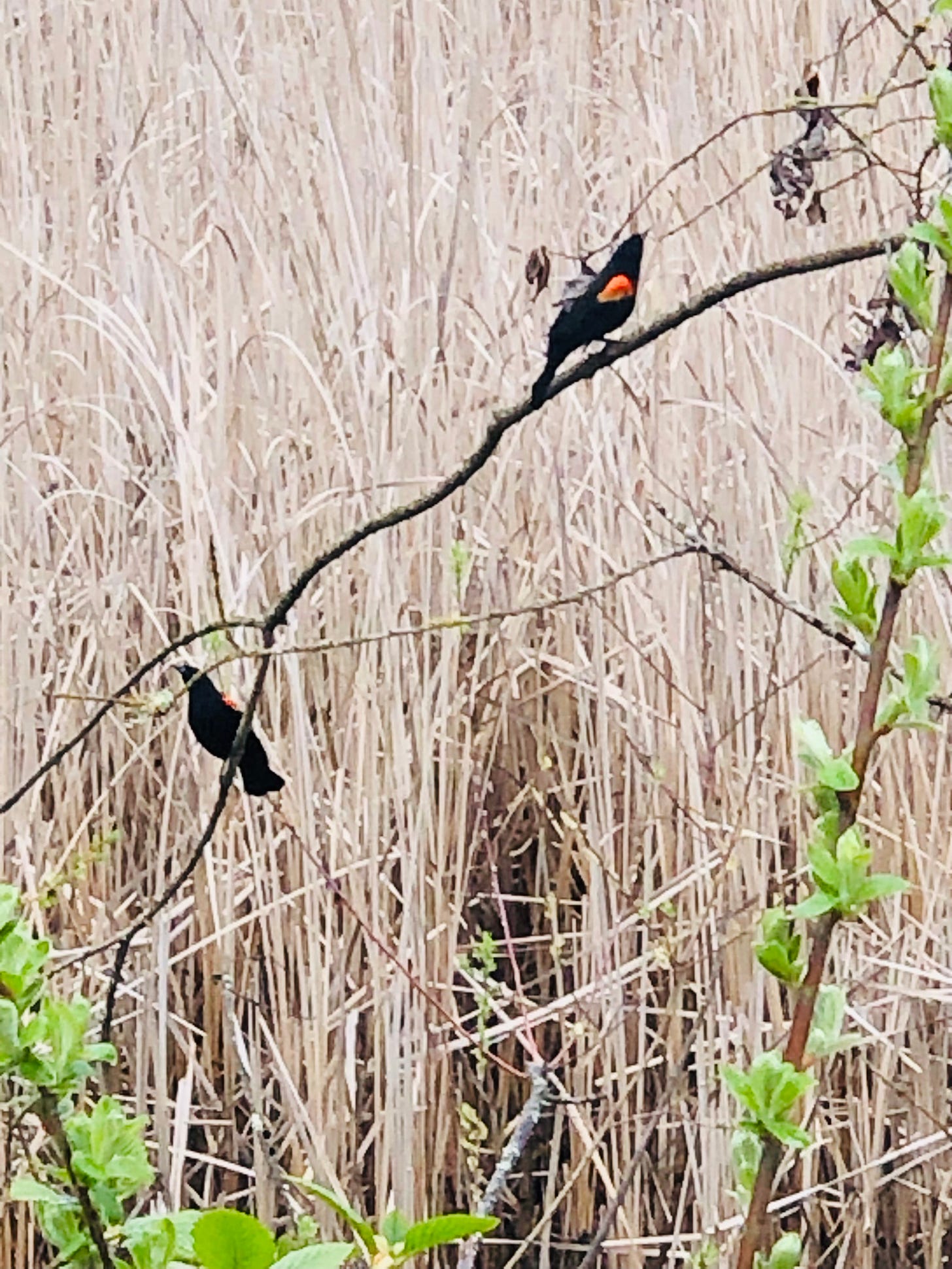Ancient gateways.
Reclaiming our senses.
"It is difficult to undo our own damage, and to recall to our presence that which we have asked to leave." ~ Annie Dillard, Teaching a Stone to TalkLike all seedlings, we emerge into existence with an intuitive capacity for interconnection. Our souls and sinew sense that our very survival depends upon this ancient law binding all life, eagerly reaching to find that which nourishes.
It is the rare child who isn’t drawn toward the natural world in an expansive and benevolent way.
In our sensory saturated infancy, we observe other animals and even our own bodies in a state of awe and reverence. Dig deep in the soil with small hands, turn our heads curiously at breeze and birdsong, put lemony leaves or salty stones in our mouths to taste and test.
There is no hierarchy, no “other.”
Even before we were born our sharpening senses began to serve as vital “information gateways” bridging us to the wide waiting world, shaping and guiding who we are in connection to everything else.
We learned to recognize our mother’s voice and reliable rhythmic heartbeat as well as assimilate other resonant (and instructive) sounds: the balm of music or comforting conversation, a beloved barking dog, or sinister and scary slamming door.
For me it was a gregariously friendly 20-pound orange tabby cat named Muffin, a formidable fixture in my early childhood. His favorite purring “perch” during my mother’s pregnancy with me was her protruding belly. One of the earliest sounds I likely registered was the calming low-frequency vibration of his “voice box” as he lazily draped directly above me in pure contentedness. It is no surprise I arrived in this realm utterly fixated on cats and their kin.
My first spoken word was “kitty.” As an infant I lavished such fervent attention on my velveteen feline, I wore off the dear creature’s entire faux-fur coat. As an older child I spent hours crawling on every substrate—long after I could walk and run—wearing out the knees of all my pants, mimicking every beautiful animal I could conjure.
The Arctic fox was a particular favorite. Transfixed by this golden-eyed and long-furred marvel who could morph colors as the tundra changed with the seasons, she was my first superhero.
A close friend tells a similar story of a four-legged heroine in her own childhood.
A live televised event was held in her city featuring a famous clown named Whizzo who addressed a group of children—herself among them—asking what they wanted to be when they grew up. Her hand shot into the air waving wildly. When called upon she shouted boldly: “I want to become a black horse!!” I love her for this (and so much more). While the crowd laughed raucously and possibly even cruelly, why shouldn’t that have been her answer?
Black Beauty was an icon and household name in that era, majestically shaking out his sun-reddened mane as he galloped through the pastures of countless children’s daydreams.
Most of us possess a defining story like this if we dig deep or go back far enough.
What gallant black horses, tall oak trees bearing sheltering boughs we sought for comfort, or springtime shedding blue-gray foxes call our true names even now?
And why do we cast those stirrings aside in our doing (and, yes, undoing)?
Annie Dillard parses our predicament skillfully by refusing to minimize the damage done. Yet she equally emboldens us to consider that “recalling to our presence that which we have asked to leave” remains well within our reach. And reason.
In other words, we can choose to come back to our senses. Literally, as well as metaphorically.
Think of the solar eclipse last April. As temperatures plunged, darkness descended and birds ceased their song in the span of mere minutes, observers in the “path of totality” shrieked and wept in wonderment without exception. Even meteorologist Pete Sack, reporting for NBC in Chicago, lost his usual composure and capacity for words as he gazed with mouth agape at the celestial drama unfolding. Who can blame him? It was spellbinding.
Because our senses have not forgotten the wordless mysteries of our primordial beginnings or the webbing that winds and binds all life; and always has.
In January a beloved and inquisitive friend invited me to join her for a gong meditation, or sonic sound bath, as an intentional way to usher in another new year.
It stunned me how quickly we—a grouping of total strangers—all trustingly fell under the gongs’ sensuous acoustic spell as their melodic reverberations waxed and waned in a whirling purl around the colorful meditation room, vibrating through our cells (which each have sound receptors!). Calming our world-weary minds and unifying us no matter our politics or origins. Calling each one of us home to our bodies. Some people relaxed so completely they fell into a deep sleep.
Sonic bathing is a practice known to stimulate the immune system while restoring mind-body harmony on a quantum level. I could feel the healing resonance for hours, even days and weeks, in ways I did not anticipate yet should have.
Mysteriously on the very afternoon I set out to start this essay with the pulse of gongs still lingering, BBC happened to be airing a segment about sound but focusing on its dissonant component: noise. A sobering expose on how “noise pollution” has become a public health crisis in our city-centric environs. Contrasted with the myriad health benefits of sound baths which mimic nature’s (and our own bodies’) vibrational frequencies, the roaring rattle of our increasingly industrial domain is shortening our lives in dire and dramatic ways. Meting out heart attacks, anxiety, and even dementia. The opposite of mind-body harmony.
And it’s not just impacting us, of course.
Underwater, human-generated decibels are intensifying with our busy world, significantly impacting sea-dwelling creatures like dolphins and whales. These booming industrial byproducts disrupt cetacean communication and navigation systems as well as foraging behaviors—causing chronic stress and hearing loss, even malnutrition and miscarriages.
Decades ago during a career transition from travel writing to animal advocacy, I had the good fortune to visit the Center for Whale Research (CWR) in Washington State’s San Juan Islands. CWR has been studying the local Southern Resident Killer Whale/Orca populations since the mid-70’s, performing an annual census in order to better understand the whales’ collective needs, critical habitat health, and what might aid their ecosystem recovery.
One memorable morning I slipped into a puffy orange life-vest and ventured out on the Salish Sea’s gentle lapping waves with CWR staff to photograph local resident J and K pods “napping” together.
The sleeping whales were clustered closer than usual, slow-motion swimming in sync just beneath the surface of the water beyond our little (familiar to them) motorless boat. Sitting in stillness, we absorbed the rhythmic vibrations of the merged pods’ collective breathing as they burst above the waterline in unison, spouting salty spray through their blowholes into the low-lying morning mist.
A mutual witnessing that changed my life in more ways than one. That same day I swore off all whale-watching involving motorboats, loathe to add to an already catastrophic cacophony that is stressing them out. It’s a promise I’ve kept. In return, their gift to me was the sacred sound of breath mingling with water that permeated my senses and has stayed with me all these years. A teaching touchstone.
Sound is like that, isn’t it? Just like scent and touch, sight and taste. In their presence, we are present. Called forth.
We store these commenced moments intentionally sometimes, but also unwittingly, because our sense memories are direct portals and guides to sentience and serenity—as well as safety and survival.

As a final footnote to this ode to the senses, I celebrated St. Patrick’s Day this year by losing myself in every album I could find featuring the tender, traumatized, and powerfully expressive Sinead O’Connor.
I’d recommend it, for the record.
She was a gifted artist, sincere soul, and voice for the voiceless—intimately and intuitively connected to the lyrical and loss-strewn landscape of her (and all of our) heritage and history past and present. Aptly she once described the gift of her music by stating: “I'm on fire when I'm singing . . . I use my sense memories, and every syllable of it is meant. It's a very special thing.”
“Undoing her damage,” Dillard might say. And ours too in the act of listening.
Invitations are everywhere, asking us to recollect (“bring back to the level of conscious awareness”) and re-engage what we were born with. And for.
“To me, there is spirit in a reed. It’s a living thing, a weed, really, and it does contain spirit of a sort. It’s really an ancient vibration.” — Steve Lacy




Thank you for bringing these concepts to life in such a healing way!
I am thinking about all you (and Annie Dillard) say, here. It occurs to me that this recollecting applies directly, in my world, working with clients who have trauma. And this has me thinking more deeply about sense memories (and, overall, implicit memory) and trauma work. Thank you, Stephanie.